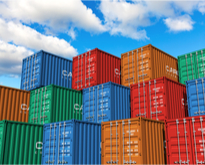In 2021, the value of total trade (import plus exports) of raw materials between the EU and the rest of the world reached €178 billion. Since exports (€71.3 billion) were lower than imports (€106.8 billion), this resulted in a trade deficit of €35.5 billion.
Between 2002 and 2021, EU trade in raw materials almost tripled, equivalent to average annual growth of 5.6%. In this period, exports (6.5%) grew faster than imports (5.0%).
During the financial crisis of 2009, imports of raw materials decreased by €26.1 billion. Two-thirds of this drop (€17.9 billion) were due to a decrease in the imports of rubber, metal and minerals.
The most commonly exported raw materials were metals, minerals and rubber (39%), followed by wood, paper and textiles (33%), and animal and vegetable raw materials (28%).
In imports, metals, minerals and rubber (56%) were also the most traded raw materials, followed by animal and vegetable raw materials (30%), and by wood, paper and textiles (14%).
China and Brazil lead as main export and import partners
Source dataset: DS-018995
China was the main export destination of raw materials, accounting for 16% of all extra-EU exports in 2021, followed by the United Kingdom (15%), Türkiye and the United States (both 10%). These top four export partners accounted for about half of all extra-EU exports.
In terms of extra-EU imports, Brazil (12%) and the United States (11%) were the main partners, followed by Ukraine and Russia (both 7%). The top four combined made up 37% of all extra-EU imports.
For more information:
- Statistics Explained article on international trade in raw materials
- Dedicated section on international trade in goods
- Database on international trade in goods
Methodological notes:
- Raw materials can be subdivided into three main groups: animal and vegetable raw materials; wood, paper and textiles; metals, minerals and rubber.
- The United Kingdom is considered an extra-EU partner country for the EU for the whole period covered by this article. However, the United Kingdom was still part of the internal market until the end of the transitory period (31 December 2020), meaning that data on trade with the United Kingdom were still based on statistical concepts applicable to trade between the EU Member States. Consequently, while imports from any other extra-EU trade partner are grouped by country of origin, the United Kingdom data reflect the country of consignment. In practice, this means that the goods imported by the EU from the United Kingdom were physically transported from the United Kingdom but part of these goods could have been of another origin than the United Kingdom. For this reason, data on trade with the United Kingdom are not fully comparable with data on trade with other extra-EU trade partners.
To contact us, please visit our User Support page.
For press queries, please contact our Media Support.


